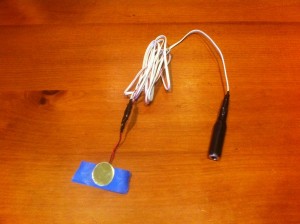What to do with that old Android phone sitting in your drawer? You know, the three-year-old Moto G with the broken screen. That one. Here’s an easy plan: turn it into a home security camera on the cheap.
- [optional] Make sure you have anything of value copied off to a safe place, and clear off all personal data by resetting the device to factory settings. You probably should have done this before putting it into the drawer in the first place. Restart the device, get it set up, connect it to your wi-fi, and add a Google account so you can download stuff from the Play Store. If this is a real Google account that you use for email and such you might want to turn off all syncing.
- Install the IP Webcam app. There are other apps out there as well, and this has a Pro upgrade version for a few bucks which looks to have some nice features.
- Run the app and mount the camera in a place where:
- it shows what you want
- can be reached by a charging cable connected to a power outlet
- isn’t going to be attacked by weather, kids, pets, etc.
- Note the IP address of the phone (the app will show you this), and play with the settings a bit. I turned on motion detection and video recording on motion. Consider enabling security features if that makes sense for your network.
- Access the video stream on the same wi-fi network. You can view it in a browser at http://phone-ip-address:8080. I’m using the VLC app on an old Android tablet to view the stream from my family room, connected to the stream at http://phone-ip-address:8080/video.
I mounted my camera in a window in a detached garage that has a good-enough wi-fi signal an a good view of the driveway. With blue painters tape and some cardboard. It’s not pretty, but it works!




 Back in 2003 I was coming off a failed startup and worked a couple of contract software development gigs while looking for a steady job.
Back in 2003 I was coming off a failed startup and worked a couple of contract software development gigs while looking for a steady job.